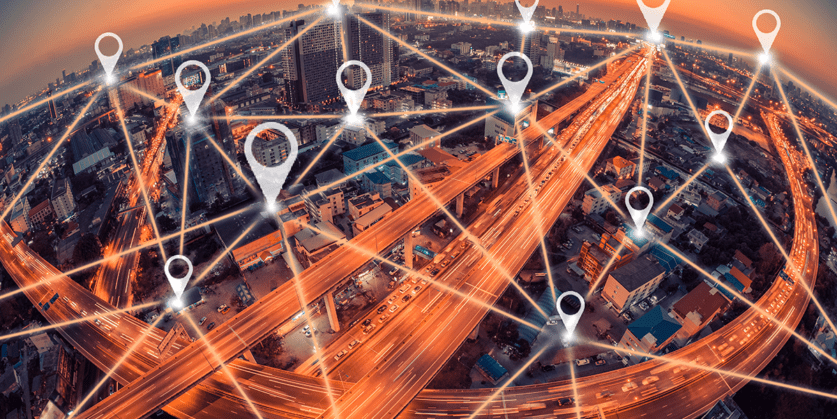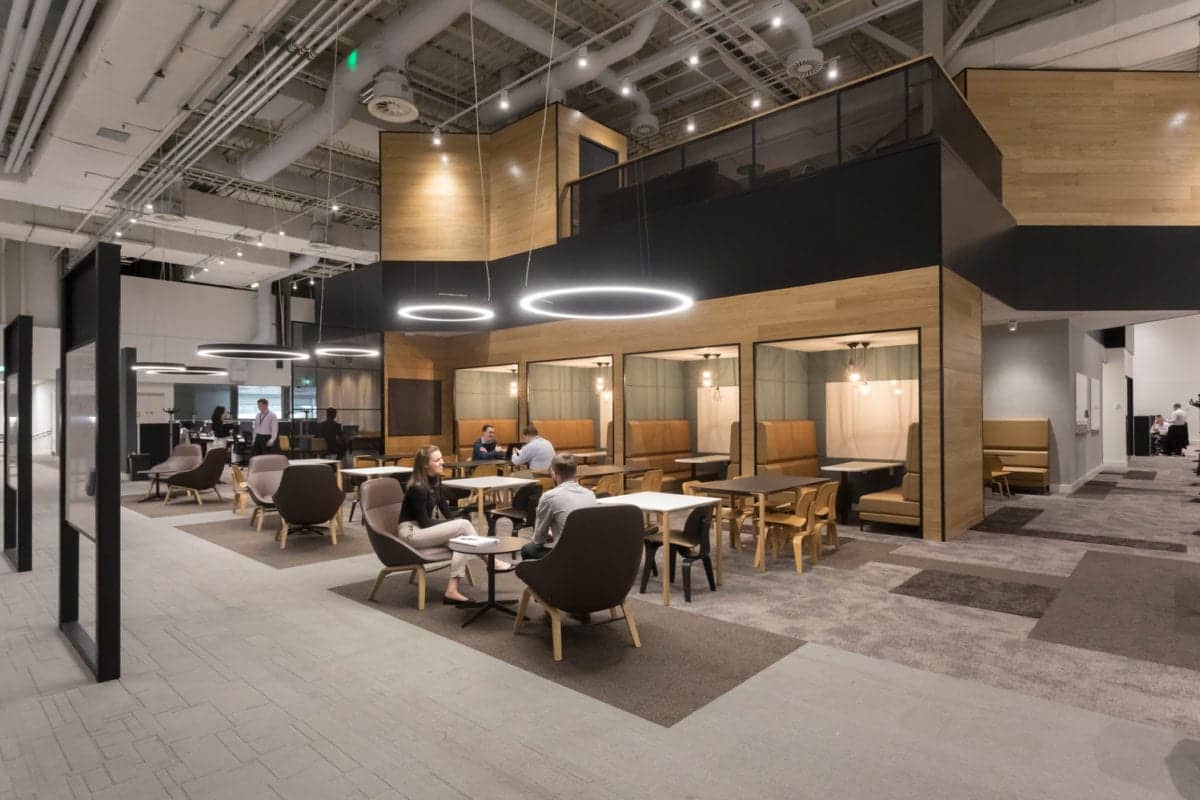By Guy Messick, AIA | Director of Design Intelligence | November 21, 2017
Smart facilities promise empowerment as they challenge personal privacy.
Smart Cities, Smart Buildings, and Smart Offices have rapidly become key factors in planning the built environment, and a commonality in all three is location awareness. Also referred to as location tracking, this technology uses passive and active systems to identify and determine the location of people and things both inside and outside of the workplace. Not to be confused with the sensor-based occupancy studies that typically determine if a seat and/or room is occupied, location awareness depends on networks that most often work through your mobile device.
Why is this desirable? Consider this example: You are about to leave for work and have several meetings planned in different locations when your mobile app lets you know that a public transit outage will cause you to miss your first meeting and potentially impact the timing of your entire day. The app, however, knows your schedule, springs into action, and recommends a transit solution resulting in a lesser delay. It then books a new space for your first meeting, informs the other attendees of the change, and throughout the day stays on top of your remaining appointments and any additional delays. Sounds great!
But is it? Maybe. You’ve given up some privacy in the name of convenience and that is the crux of the coming disruption. The app and your employer know specifically who you are and where you are at all times. Beyond the agreements you have with your employer and technology provider, which may not protect you as much as you think, there is little established law to protect your privacy.
The concept of privacy law has been closely linked with technological development as far back as 1890, when Warren and Brandeis published their seminal article, “The Right to Privacy“, in Harvard Law Review. Back then, they argued that the increasing and widespread circulation of newspapers that peddled gossip and intrusive photographs was impinging on personal privacy and domestic life. As a remedy, they asserted that common law must adapt to current inventions and business methods to preserve the sanctity of personal privacy.
With the rise of social media and the advantages of new technologies, how much privacy do we really have or need? To effectively move forward with Smart environments that implement location awareness, privacy concerns will have to be sorted and addressed. Without dialogue, socialization, and ultimately buy-in from the workforce, expensive boondoggles seem inevitable. Many workers will feel intruded upon as tracking reveals sensitive information about personal habits, choices, and information (i.e. regular attendance at a support group, political rallies and affiliations, the recurring late nights out). Moreover, how will tracking protocols prevent abuses such as stalking?
Will the benefits of location tracking out-weigh the concerns? Seen as a tool for inclusion, tracking will essentially empower the workforce to have a voice in the design of the workplace and public environments that shape their future. Data gathering that is based on how workers individually move through their day, deal with and respond to convenience, and interact with the workplace and public environments will inform forecasting to not only drive savings and convenience, but also create opportunities for wellness and champion sustainability.
The AEC industry, in particular, will want to weigh in and join if not lead the conversation. A public/private partnership that clarifies privacy rights and laws in the digital world is long overdue, although groups like the International Association of Privacy Professionals and The Center for Internet and Society are working diligently to help that happen. Location awareness is coming and it is incumbent on all of us to come together to determine its best uses and legal boundaries. The benefits and pitfalls are too important and far reaching to leave to chance.
This post is the first in a series exploring the growing adoption and use of location awareness technology and its effects on the workplace. Look out for future articles on this topic.



